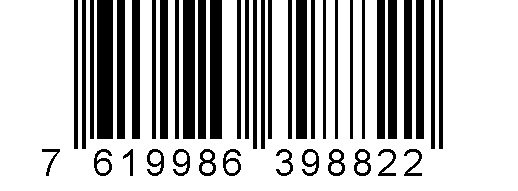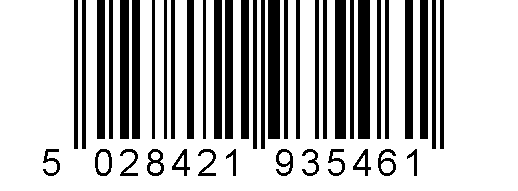Baroque Music: Jean-Philippe Rameau, Domenico Scarlatti
Media Review / Listening Diary 2012-07-27
2012-07-27 — Original posting (on Blogger)
2013-07-17 — New standard layout applied
2014-11-02 — Re-posting as is (WordPress)
2016-06-26 — Brushed up for better readability
Table of Contents
Listening Diary Posts — An Introduction
My comprehensive reviews are a lot of work — if I were to do a full review of all music that I listen to, I would need need to give up sleeping, work, eating, etc — and I would still need to reduce the number of CDs / pieces that I listen to. So, I decided to add a new category of blog post, capturing CDs / music that I listen to without doing a full comparison between different recordings, but still worth a couple remarks in my blog — though not covering “casual listening” (e.g., stuff that I listen to only once in the review period).
I expect to have at least a short set of remarks on the recordings mentioned here. The main “drivers” for selecting the recordings below is either new purchases, or recordings in my CD collection that I’m “sucking into iTunes” (about 95% done at this point). New acquisitions are shown with bigger pictures, small pictures indicate recordings that I have included / listened to for reference or comparison purposes. We’ll see how that goes — here’s this month’s batch of recordings:
Jean-Philippe Rameau: Suites d’Orchestre
Jean-Philippe Rameau: “L’Orchestre de Louis XV” — Suites d’Orchestre
Le Concert des Nations, Jordi Savall
AliaVox AVSA9882A+B (2 CDs, Hybrid SACD); ℗ / © 2011

Realizing that Rameau was completely absent (yet) from my CD collection, I could not resist when I was pointed to this recording while skimming Amazon for Viola da gamba recordings (see my post “Forqueray: The Attraction of the Deep“). This recording features the four orchestral suites “Les Indes Galantes” (1735), “Naïs” (1748), “Zoroastre” (1749), and “Les Boréades” (1764). All are collected from music from Rameau’s opéras with the name of the suite.
I love this recording — the performance is excellent (as expected with Jordi Savall, of course!), fascinating, has drive, rhythm, swing, shows the lively colors of the period instruments. I could barely stop listening to these suites: I can only recommend this CD set!
Domenico Scarlatti: Keyboard Sonatas
Domenico Scarlatti: Complete 555 Keyboard Sonatas
Pieter-Jan Belder (Harpsichord, fortepiano, organ)
Brilliant classics 93546 (36 CDs, stereo, recording 2000 – 2007)

That is this year’s “filler project”. For a while I have been pondering whether I should purchase Scott Ross‘ complete recording of all sonatas by Domenico Scarlatti, on 34 CDs. I hesitated because that recording (1985) is now 27 years old. The parts that I listened to (e.g., on YouTube) made me doubt whether Scott Ross’ interpretation could match up to newer recordings such as those by Ottavio Dantone (1997 – 2002) or by Andreas Staier (1990 – 1995).
The Various Recordings in my Collection
When Pieter-Jan Belder’s complete recording (including sonatas for violin & keyboard instrument) came out on 36 CDs, I decided to try my luck — and purchased it. So, for most of this year, I’m listening to Scarlatti sonatas, one by one . Or rather, two by two, as they often / mostly come in pairs in the same key. Mostly, I just have just in Pieter-Jan Belder’s interpretation. Where others are available, I have compared Belder’s version with with Dantone’s or Staier’s interpretation. This month, I have listened to K.262 up to K.303. With the exception of K.263, 264, 277, and 278 that I also have with Andreas Staier, all sonatas for this month are present in Belder’s recording only, so I’ll keep my comments short.
Pieter-Jan Belder has recorded the sonatas more or less in the order of Kirkpatrick’s enumeration. In the early sonatas (low Kirkpatrick numbers, recorded 2000 – maybe 2002) I found his interpretation quite OK, though less lively & colorful than Ottavio Dantone‘s recordings. Unfortunately, Dantone only recorded 62 sonatas on 4 CDs, all in 1997 – 2002. This was part of a Scarlatti project involving multiple artists. Andreas Staier recorded 52 sonatas on 3 CDs, in 1990 – 1995. To me, he seems superior in these early sonatas, with a focus on virtuosity and tempo.
A First Look at Belder’s Performance
It’s as if in the early recording sessions (covering many of the better-known sonatas), Belder was carefully exploring the terrain. But he appears to be growing with the project. Also his principal harpsichord manufacturer, Cornelis Bom (Schoonhoven, later Nieuwwolda, The Netherlands) appears to be providing better, more colorful instruments (both Flemish and Italian models).
The sonatas that I listened to this month are at least on a par with, if not superior (sometimes) to Staier’s interpretation. We’ll see how things progress: next month, I’ll be listening to sonatas played on organ and fortepiano (as well as harpsichord). In this month’s batch, only K.287 & 288 were played on a church organ (Koepelkerk, Arnhem, by C.F.A. Naber, Deventer, 1842).
Listening Diary Posts, Overview






